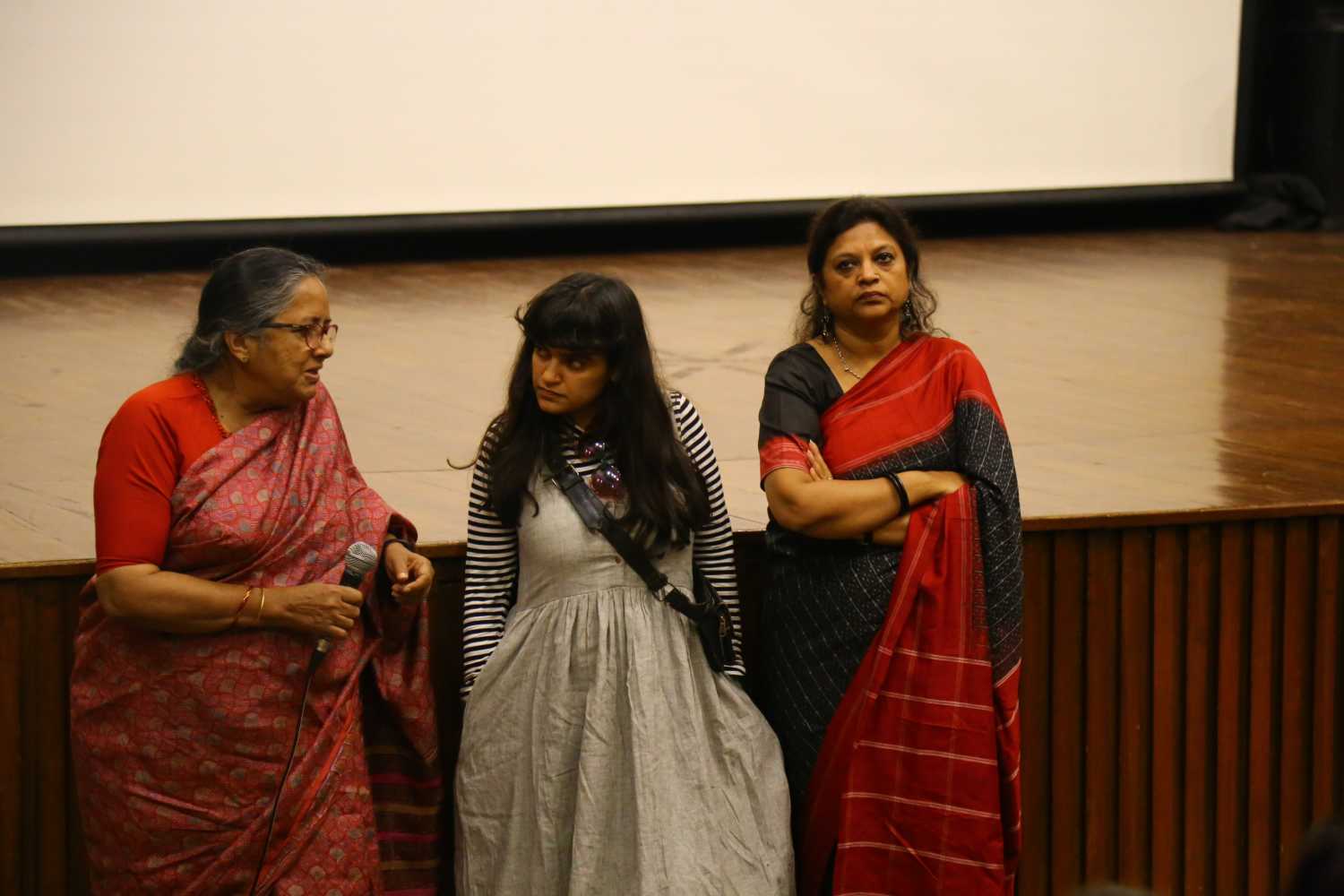The documentary, produced by IAWRT, on the global refugee crisis and the condition of women and young girls generated concerns and conversations at the 15th edition of the festival.
AWFF 2019: Collaborative documentary Displacement and Resilience explores conflict, migration and exile
New Delhi - 11 Mar 2019 14:07 IST


Prateek Rawat
On Day 2, the IAWRT’s 15th Asian Women’s Film Festival (AWFF) 2019 explored the crisis and tribulations of refugees in a collaborative documentary project titled Displacement and Resilience.
The film has been produced by IAWRT with filmmaker Chandita Mukherjee as the executive producer spearheading the concept. The film is a combination of segments contributed by filmmakers Erika Cruz of Philippines, Khedija Lemkecher of Tunisia, Eva Brownstein of Canada, along with Afrah Shafiq, Archana Kapoor, and Mukherjee (herself) from India.
The proposal for the film was conceptualized by Mukherjee in an annual call for filmic concept notes from IAWRT members. “I proposed the concept because of the urgency of the refugee crisis we see today,” said Mukherjee.
The film narrates the ordeals of conflict, migration and exile in the lives of women refugees from five locations: the Rohingyas in Haryana and Delhi, the Tibetans in Dharamshala, the Lumad and Matisalug communities in Philippines, the Syrians in Tunisia and Vancouver, Canada. Combining interviews with title cards, archival footage and mix-media with principal photography, the film presents an extensive overview of the similarities and variations in the life of female refugees, exiled and displaced for several reasons.
Due to the extensive scope of the subject covered, the film has been divided into separate thematic sections for primary differentiation, and interlayered with segments of different regions and communities across these sections.
Commenting on the editing, Mukherjee said, “To bring the collaboration together, all filmmakers involved made their individual films. It was a real challenge to slice up all these segments and stitch them together into a coherent narrative.”
The sections dealt with in the film look at the following conditions/circumstances: living in displacement, humanitarian response, ‘development’ and internal displacement, war and genocide, war and diaspora, community cohesion in long term exile, and dreams of the future. The analytical commentary runs through title cards coupled with archival footage that adds an intellectual and informative layer to the emotionally charged narratives of the film’s subjects.
The film recounts a series of issues faced by women in exile through several interviews of victims/survivors and social workers. Issues like human trafficking, assault, violence, genocide, poverty and diseases, filial separation, identity crisis, isolation and PTSD afflict many of the women currently living as refugees. The film claims through statistics gathered by several agencies worldwide that more than 50% of the world’s refugees are women and young girls.
However, the focus of the film is not simply on displacement and trauma, but also the spirit of resilience within the communities. It claims that it is the women who are responsible for much of the rehabilitation and resilience seen in the refugee communities. In the protests of the Lumad and the Matisalug led by old women leaders, the defiance of the spirit of indigenous women against the encroachment of state-sponsored militia and capitalist industries, is a testament to the enduring spirit of womanhood.
Decades of exile and shifting forms of resilience are explored in the Tibetan segment. Filmmaker Afrah Shafiq explains, “This segment is more about the memory of exile rather than the actual happening because it has been 60 years to the struggle for Tibet. The memories have been inherited from generation to generation and are a part of their psyche, but we also see that some of the youth is moving on, while others like Namgyal are in a dilemma where they respect the sacrifices of their struggles of their elders, but have different political beliefs of active resistance.”
The making of a documentary is always a challenging task. Speaking truth to power and narrating the stories of the oppressed and the victimized often require strategic interventions from filmmakers.
Archana Kapoor explains, “The Rohingyas in Mewad and Vikaspuri live in extreme poverty, illiteracy, lacking sanitation and health facilities, and with great uncertainty about their future. Why Chandita and I shot this segment together was because while one of us was doing the interviews of the refugee woman, the other was busy talking to the police and authorities and almost distracting them from stopping us. There is great distrust and xenophobia in India and the authorities against the Rohingya refugees.”
IAWRT’s production is a timely and topical documentary that is as intelligent as it is poignant, which does not lose the edge of facts and stats while bringing to the forefront the emotionally charged traumas of its subjects.
In the current xenophobia and anti-immigration sentiment brimming over the surface across developed and developing nations, Displacement and Resilience is an urgent reminder and call to action.
The film is an extensive sketch of the historical and the present, a sharp indictment of the lack of humanity within the state and the people, while doubling up as a celebration of the enduring spirit of resistance and an effective demand of reformative practices.
The Asian Women’s Film Festival is being held from 5-7 March 2019 at the India International Centre in Delhi. The theme of the 15th edition is 'The Female Gaze'. The festival will screen over 50 films from 20 countries by female filmmakers in several formats, along with workshops, panels and an art installation.
Related topics
IAWRT Asian Women's Film Festival

